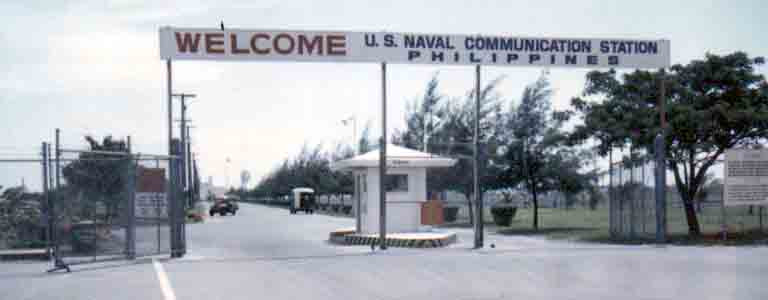San Miguel
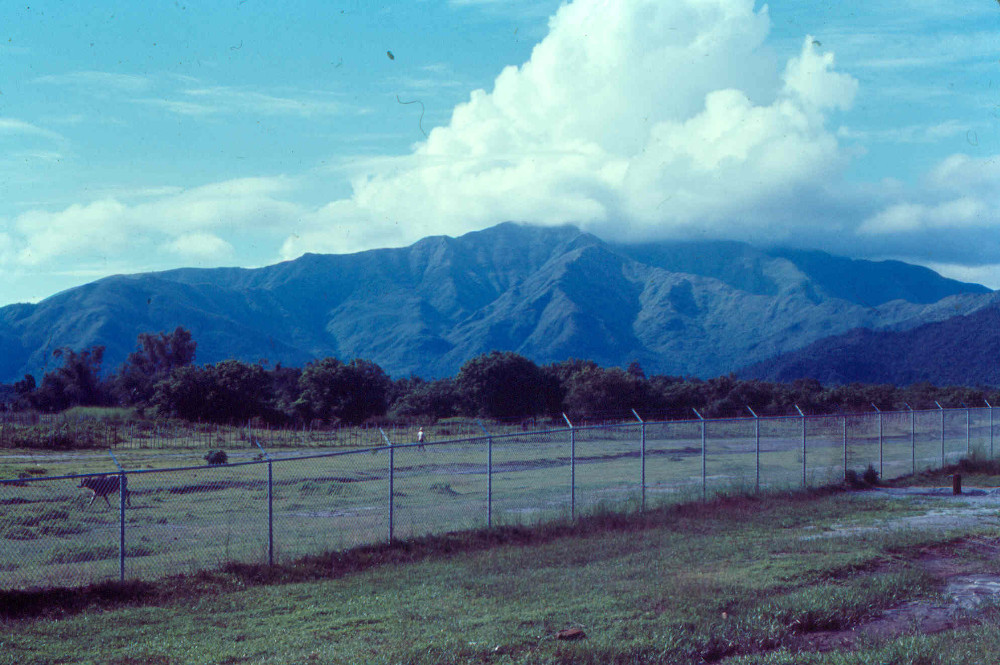
The heavy monsoon rains finally broke for a while and revealed the little base at San Miguel for what it was, a comfortable, fun and beautiful place for duty. For such a small base, San Miguel had a lot of amenities: A nine hole golf course, a beautiful and modern community center called the Blain Community Center which housed the library, hobby rooms, classrooms and other facilities. The base Olympic sized swimming pool was just outside the Blain Center. The new enlisted club opened not long after I arrived and there was a small but adequate Navy Exchange, a geedunk (small cafeteria), Post Office, Barber Shop, ball fields, gymnasium, etc. San Miguel also had an award winning chow hall that served excellent food. Unlike most military chow halls of the day, San Miguel had nicely set tables and plenty of hired help so there was no busing your own dishes to the scullery. It was almost like eating in a restaurant.
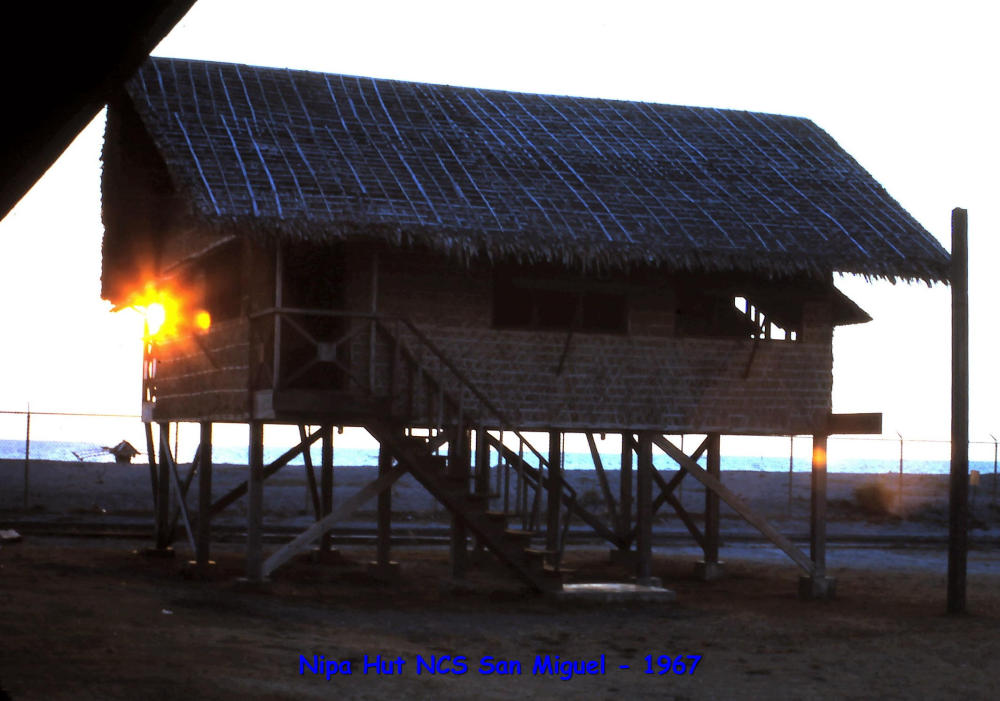
My favorite amenity at San Miguel was the “Nipa Hut”, a bar built like a traditional Philippine house that stood on stilts at the back gate leading out to the beach on the South China Sea. This area also housed the base picnic grounds and pavilion; another place of some delightful memories. Me and a group of friends headed down there for the sunset every chance we got. John Hibbs, a close friend and barracks mate of mine, told us about the fabled “blue flash”: just as the sun would set below the sea it would spark a quick blue flash of light as the sunlight pierced the water. We never saw a blue flash while I was there, but we always got our daily dose of vitamin “C” as we consumed our share of Harvey Wallibangers from the bar and enjoyed the fresh sea breeze and beautiful sunsets.
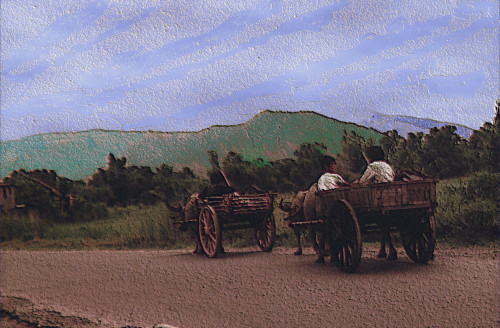
Off base there were the Crossroads, a bar district just a short tricycle ride down the road from the main gate and the city of San Antonio, Zambales, Philippines just another mile or two down the road from the Crossroads. San Antonio was a small town that was clean (by Philippine standards) and friendly. The base softball team would play the San Antonio team about once a year in the town square. If San Antonio and the Crossroad weren’t enough to keep you occupied you could take the shuttle bus, yes that same grey monster that initially brought me to San Miguel, which made daily runs to Subic Bay Naval Base and Cubi Point Naval air station. The bars in Olongapo City just outside the gate at Subic were large, air conditioned and had excellent live bands and very cold San Miguel beer for the fleet sailor’s shore leave enjoyment. All the facilities on the Subic/Cubi complex were much larger and better equipped than at San Miguel. I never liked visiting the Subic Bay area when the aircraft carriers were in port because every facility would be full of fleet sailors, many of whom were drunk and obnoxious.
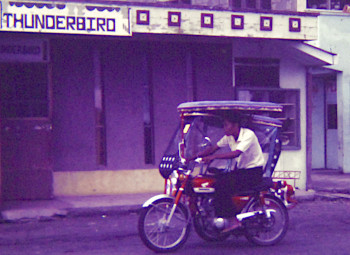

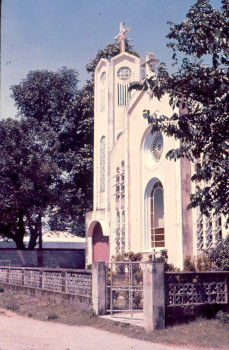
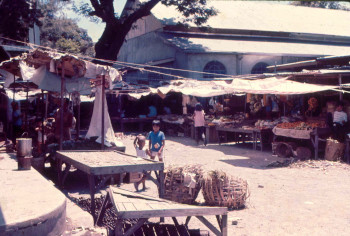
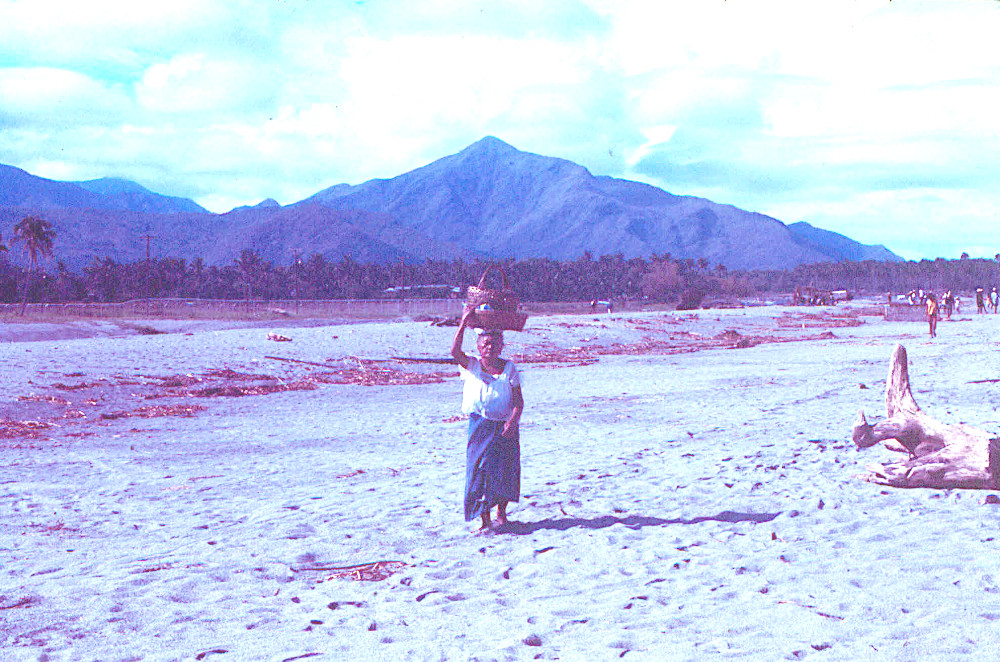
My barracks mate, I think his last name was Collins (pictured above under the dental clinic sign), was into photography and it also interested me. We went to the base exchange and he helped me pick out my first camera. It was an Asahi Pentax 35mm with interchangeable lenses and known for the quality of lenses they made. Our first photography outing was to the beach out the back gate of San Miguel. We walked down the beach to barrio San Miguel for which the base is named and I got a pretty good lesson on using my new camera. I still have many of the pictures we took. I’ll be forever grateful for my shipmate’s help, I’ve never lost interest in photography even though I have never developed the patience to be any good at it.
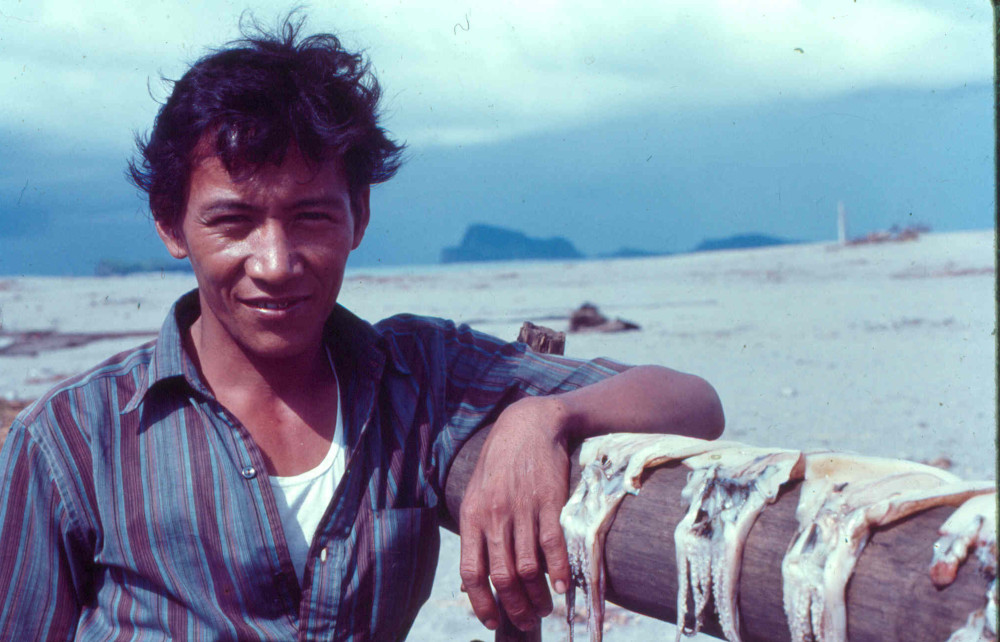
A group of us sailors from San Miguel decided we would climb up to the water fall on the mountain we saw everyday on the base. You could usually see waterfall, during the rainy season at least, and it’s beauty lured us into the expedition. To go there you had to inform the command and inform the mayor’s office in San Antonio to make sure there was no unfriendly activity going on in the area. There were about five of us but I can only remember John Hibbs, a good friend. It was quite a trek; we took a jeepney as far as the Pamatawan river and began our hike. It was much farther than it looked from the base but we worked our way up the mountain and through the jungle to reach the falls. It was absolutely beautiful but I don’t think even one of us brought a camera. We knew it would be a rough trip and we weren’t sure how secure it would be so I intentionally left my Pentax in the barracks. At the base of the falls there was a beautiful and refreshing pool to cool off in which everybody but me did. I headed on up the steep cliff to reach the top of the first fall about 30 feet above the pool, fighting my way through the thick bamboo and worrying about the green bamboo vipers we had been warned about. The going only got tougher from there so I abandoned my expedition and decided to shimmy down the sheer cliff of the falls. It was very slippery and after only short distance I slipped down the rest of the way and splashed ass first into the pool right next to John. I just missed a rock spire inches below the waterline. I banged my wrist up pretty good on the it but fortunately I wasn’t impaled. We got back to base too late for the chow hall so we cleaned up and had a celebration with steak dinner in the newly build Wayne D. May enlisted men’s club.
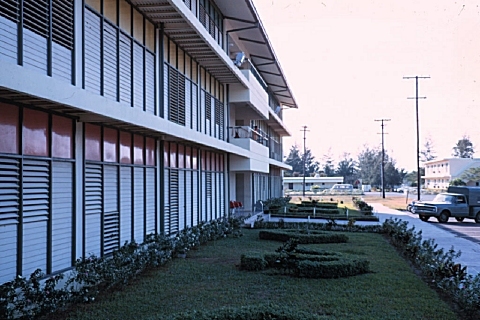
The barracks were not very comfortable. I was moved from Charlie barracks to Foxtrot which had no air conditioners at all. The front and back walls were louvered aluminum windows which let in a lot of breeze when there was one but was stifling when they had to be closed during the nearly constant downpours that occurred during rainy season. Despite the numerous floor fans that were always humming and pushing air, the dampness of the tropical climate could not be abated. The beds felt damp and musty and we had to put electric heating rods in our lockers to prevent mildew. We were also required to use mosquito nets over our bunks but I would still get bitten when my arm or hand would touch the netting after I fell asleep. I pictured a mosquito I called Marcos perched on the edge of the mosquito net just waiting for an opportunity for a his dinner. Fortunately I was not in the barracks during the hot, dry season. I’m sure it was unbearable to try to sleep in there during that season. The breezes at that time of year were hot and dry like the Arizona desert. There were some perks to barracks life in the Philippines. We hired “house boys”, yes we called fully grown men twice our age boys, who did our laundry, shined our shoes and kept the barracks immaculately clean. The cost was shared among several sailors so it was only a few dollars a month for this service. My “house boy” was June with whom I had developed a great relationship with and much enjoyed our conversations. He was very wise and funny and explained a lot about the Philippines to me. Even after he was no longer my personal assistant, I would have conversations with him on returning from a deployments.
I was in a duty section (Charlie section I think) assigned to sit a Morse collection position. We ran a 2-2-2 and 80 schedule: Two eve watches, two day watches, two mid watches and an 80 hour break. This meant we came off our last mid watch dead tired so we wasted almost a full day of our break sleeping. Somebody, long before I came along, dreamt up the “off-the-midder-shitter” where at 8:00 or 9:00 am we headed out to the Crossroads for a “sked”*, an early morning bar hopping drinking party. Those who didn’t attend were labeled “non-hackers”. After too many San Miguel beers I was out of it for the rest of the break.
When I first got to San Miguel, I was in a four section watch for duty at the “Receivers” building which was about 2 miles north of the main base among the antenna fields. On my very first, or perhaps my second mid watch, before I was familiar with any of the Standard Operating Procedures, a very loud and ominous bell rang out an alarm. Everybody jumped up from their positions and began placing all their classified documents into a red bag that was on a shelf on each position. Not yet qualified on the position, I sat “side saddle” with an experienced operator so I got up with him and asked him what was happening. He told me it was the intrusion alarm. Before we had a chance to finish bagging the documents, the watch Chief came by and without slowing down said “follow me!” He lead me and about 4 or 5 other sailors to the armory, a big steel safe in the next room and handed us all an M-4 rifle and a duty belt of ammunition clips. Since I attended boot camp in Orlando, Florida before they built a firing range I had never fired a military weapon. We marched with disabled pre-WWI Springfield rifles and field stripped the M-1 but with no firing range on NTC Orlando that was the end of my small arms training. The chief dropped us all of at different access points to the building and told us to guard them. I was left in a dimly lit passageway that ended with double steel doors which led out to the burn machine. There was not another person in sight in that long, dark passageway. He posted me right next to the double doors and I figured if anybody was getting in that way, they would have to blow it in, and me with it. When the Chief came back around to check on me, I asked if I could move back a few feet and stand in a door jam for some protection. He agreed and left again.
I decided to check my ammo clips and found the snaps on the duty belt had rusted shut. I could only open two clips of 4 rounds each. I sure hoped nobody came through those doors. Turns out a gang had tried to break into the bank on the main base. When the young (though probably a little older than I was at the time) marine guard just outside the front door in a guard shack heard the chatter on his radio, he pulled the intrusion alarm. Like me, he must have been worried about the ammunition for his 45 caliber pistol because he shot a hole in the roof of the guard shack while checking his weapon. For the next couple of months things went pretty smoothly.
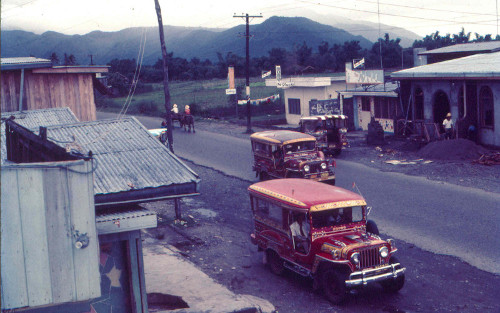
I didn’t venture off base until about my ninth day after arriving. Some of the guys at the enlisted men’s club decided to head out to the Crossroad and I decided to join them. This was my first exposure to Philippine culture. The girls in the bars were tiny, dark skinned with beautiful, long, jet black hair and beautiful black or dark brown eyes. I could hardly understand them with their thick accents and limited command of the English (U.S.) language. One girl asked me: “Are you a city?” I thought she was asking if I came from a large city so I tried to explain that I came from a country environment. She persisted: “No! are you a C-T?” referring to my Communications Technician rating. It was important for them to know what our rating was. CT’s were the predominant rating that patronized the Crossroads. Radiomen were second and a smattering of other rating were also represented along with the San Miguel guard marines. There was always an intraservice rivalry on which was the best rating. I assume it was important for the girls to know our ratings so as not to offend any of us with a slip of the tongue that might slight us or one of the ratings within earshot. We made our way through the bars down the right side of road until I got to Mama’s Place, the ninth bar of the evening. I had gotten a “four liner” beer, that was flat and foul tasting. “Four liner” referred to the number of lines of text on the back of the bottle. Three liners were thought to be an export quality beer while four liners were for domestic consumption. I found out years later while touring the San Miguel Brewing Company in Manila that the company had changed beer bottles and the new three liner bottles had a slightly larger rim. They still used the four liner bottles until they were exhausted but the smaller rim meant they didn’t seal as well and could become flat. At any rate, it made me sick and after throwing up in the Mama’s Place urinal trough, I headed back to base. Not long after my first sked in the Crossroads, our section Chief call for an off-the-midder-shitter. I was not going to be the “non-hacker” so I of course went on that sked. It was my first and last.
In September, the Chief came up and asked me if I wanted to join the DIRSUP** team. This meant I would be deployed on ships off the coast of Vietnam and I had joined the Navy to avoid duty in Vietnam but I was also engaged to a girl back home and had put all my pay into a high interest savings account so I was pretty broke. The tax free and hostile fire pay in the war zone would supplement my income. The Vietnamese hadn’t been shooting up any U.S. Navy warships lately so I figured it would be safe enough. After a couple weeks of training I was ordered to the USS Enterprise (CVAN-65) on 6 October 1971 for the duration of their South China Sea deployment and ended my comfortable life at NCSP San Miguel.
* Sked: Short for schedule, a communications term for a scheduled contact time on a communications network.
** Navy for “Temporary Additional Duty” known as TDY (Temporary Duty) in the other services. The Navy’s distinction meant you were responsible for all your normal duties while TAD.

